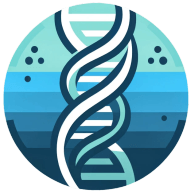Welcome to our comprehensive guide on the essential equipment for a molecular biology lab. This blog post will delve into the crucial tools that make the world of molecular biology tick. From basic apparatus to advanced machinery, we will explore the role of each piece of equipment in the lab. Whether you're a seasoned scientist or a biology enthusiast, this guide will provide valuable insights into the world of molecular biology.
The Backbone: Basic Lab Equipment
Every molecular biology lab starts with basic equipment. These tools form the backbone of any lab and are indispensable for day-to-day operations. Microscopes, pipettes, and centrifuges are some of the most common pieces of equipment you'll find in a molecular biology lab.
Microscopes are essential for observing microscopic organisms and cells. They allow scientists to study the structure and function of cells in detail. There are different types of microscopes used in molecular biology, including compound light microscopes and electron microscopes.
Pipettes are used for transferring small amounts of liquid. They come in various sizes and types, including single-channel, multi-channel, and electronic pipettes. Pipettes are crucial for experiments that require precise measurements of liquids.
Centrifuges are used to separate components of a liquid based on their density. They spin samples at high speeds, causing denser components to settle at the bottom. Centrifuges are vital for processes such as DNA extraction and protein purification.
The Powerhouses: Advanced Lab Equipment
Advanced lab equipment forms the powerhouse of a molecular biology lab. These machines enable complex experiments and research. Some of the key advanced equipment includes PCR machines, gel electrophoresis systems, and spectrophotometers.
PCR machines, or thermal cyclers, are used to amplify DNA and RNA samples. They are crucial for experiments that require large amounts of DNA or RNA, such as genetic testing and research.
Gel electrophoresis systems are used to separate DNA, RNA, and proteins based on their size. They are essential for analyzing the results of PCR and other experiments.
Spectrophotometers are used to measure the amount of light absorbed by a sample. They are vital for determining the concentration of DNA, RNA, and proteins in a sample.
The Protectors: Safety Equipment
Safety equipment is the protector of a molecular biology lab. It ensures the safety of lab personnel and prevents contamination of samples. Lab coats, gloves, and safety glasses are some of the key safety equipment in a molecular biology lab.
Lab coats protect scientists from spills and splashes. They also prevent contamination of samples by loose clothing or skin cells.
Gloves protect hands from harmful chemicals and biological materials. They also prevent contamination of samples by skin oils and microorganisms.
Safety glasses protect eyes from splashes and flying debris. They are essential when working with harmful chemicals or performing procedures that could generate airborne particles.
The Organizers: Storage and Sterilization Equipment
Storage and sterilization equipment are the organizers of a molecular biology lab. They help maintain a clean and organized workspace. Autoclaves, refrigerators, and freezers are some of the key storage and sterilization equipment in a molecular biology lab.
Autoclaves are used to sterilize equipment and materials. They use high-pressure steam to kill microorganisms, ensuring that equipment and materials are free from contamination.
Refrigerators and freezers are used to store samples and reagents at specific temperatures. They are crucial for preserving the integrity of biological materials.
The Facilitators: Data Analysis Equipment
Data analysis equipment are the facilitators of a molecular biology lab. They help scientists analyze and interpret the results of their experiments. Computers, software, and imaging systems are some of the key data analysis equipment in a molecular biology lab.
Computers and software are used to analyze data and perform statistical analyses. They are essential for interpreting the results of experiments and making sense of complex biological data.
Imaging systems are used to visualize and analyze DNA, RNA, and proteins. They are crucial for studying the structure and function of these molecules.
The Innovators: Cutting-edge Lab Equipment
Cutting-edge lab equipment are the innovators of a molecular biology lab. They represent the latest advancements in technology and enable groundbreaking research. Next-generation sequencing machines, CRISPR technology, and lab-on-a-chip devices are some of the cutting-edge equipment in a molecular biology lab.
Next-generation sequencing machines are used to sequence DNA and RNA more quickly and cheaply than traditional methods. They are revolutionizing the field of genomics and enabling personalized medicine.
CRISPR technology is used to edit genes with unprecedented precision. It is transforming the field of genetic engineering and has the potential to cure genetic diseases.
Lab-on-a-chip devices are used to perform complex experiments on a single chip. They are miniaturizing the lab and enabling high-throughput screening and diagnostics.
Wrapping Up: The World Inside a Molecular Biology Lab
In conclusion, a molecular biology lab is a complex ecosystem of equipment, each with its own role and purpose. From basic tools to advanced machinery, each piece of equipment contributes to the exploration and understanding of the molecular world. As technology advances, so does the equipment in a molecular biology lab, enabling new discoveries and breakthroughs. Whether you're setting up a new lab or looking to upgrade your existing one, understanding the essential equipment is the first step towards success.

